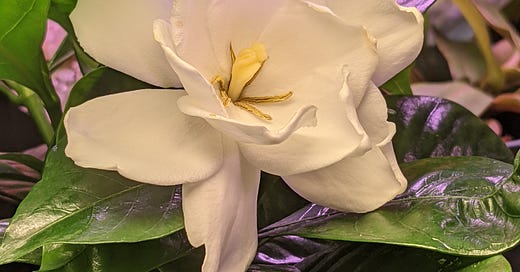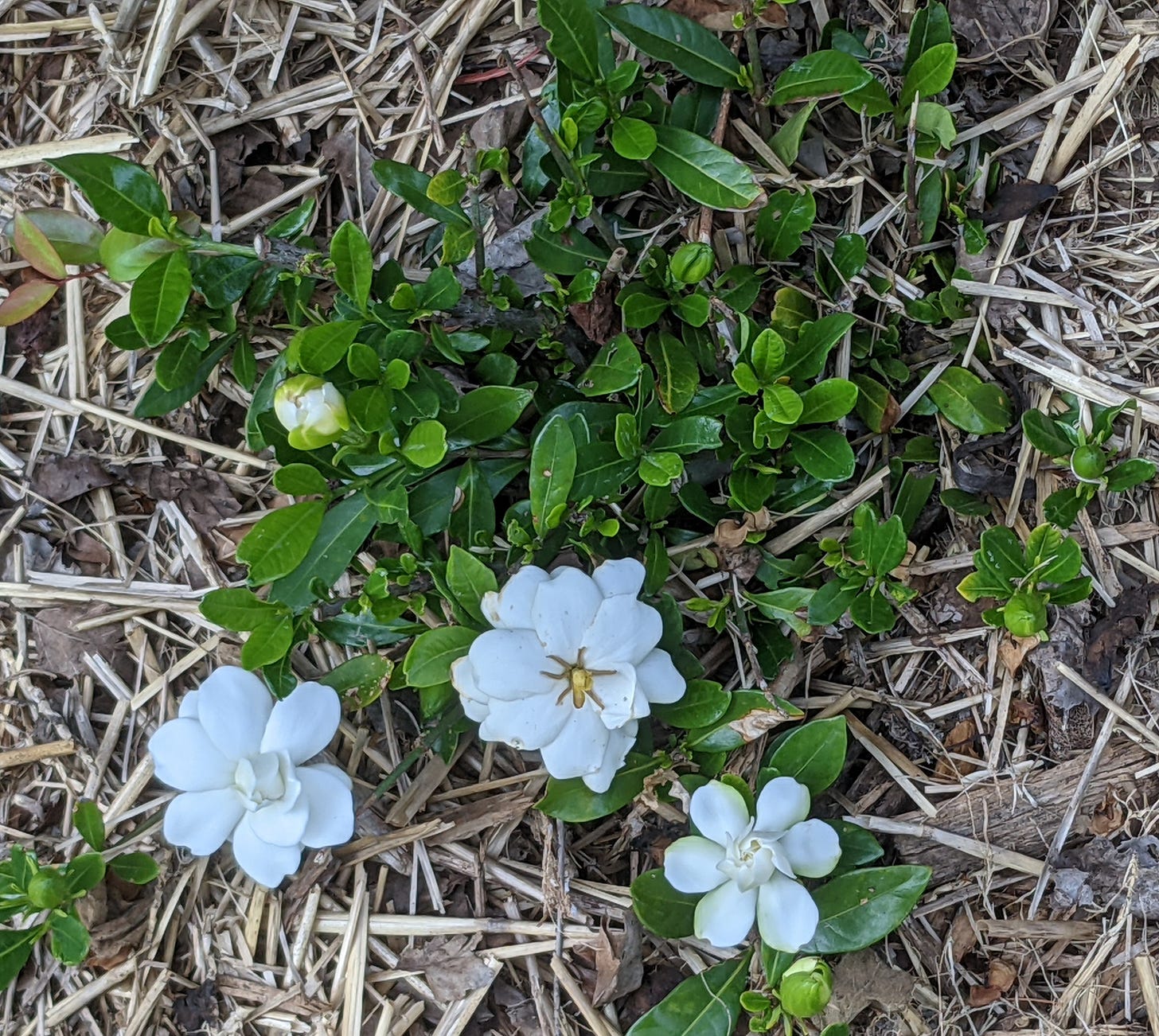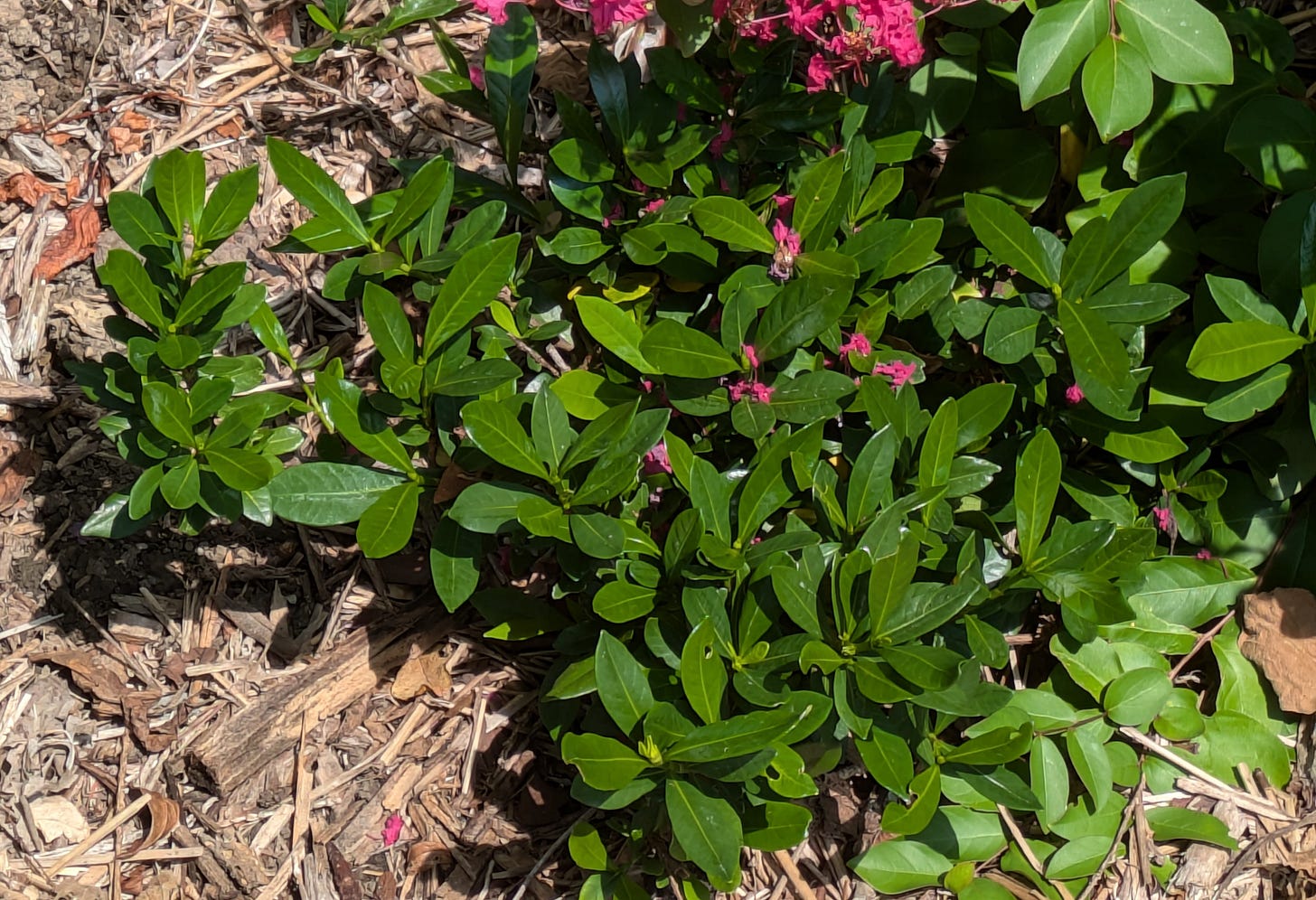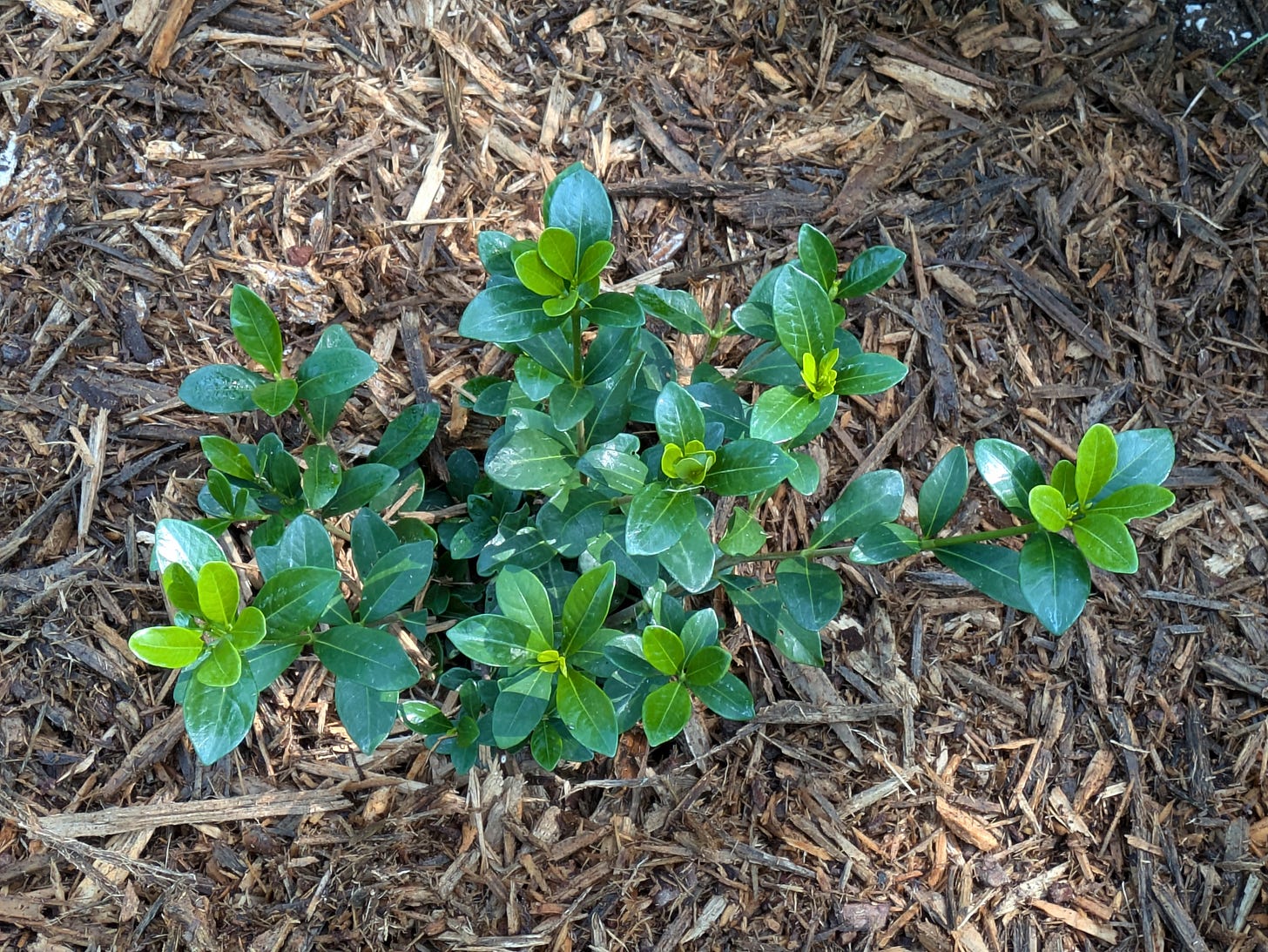Can you succeed with gardenias in zone 7 and above?
Gardenia jasminoides, a dream goal for many gardeners because of its uniquely wonderful fragrance, is not the easiest plant to grow. Often, when a gardenia is brought home from a greenhouse for growing indoors, it will stop flowering, its buds will blast (turning brown and shriveling), and the plant will enter a decline. Gardenias are really not good houseplants unless you can provide them with a combination of good light, humidity and relatively cool temperatures (a nighttime drop is helpful).
Growing gardenias outdoors projects as an impossible dream if you live in a temperate climate with cold winters, as they are generally rated reliably hardy only in zone 8 and warmer regions. It seemed like a daunting prospect to raise them in central Kentucky. However, I took the plunge back in 2020 when I spotted the variety ‘Double Mint’ (rated hardy in zones 7-9) on sale in six-inch pots for $5 each at a local home improvement center. As this was late in the season, I overwintered 2 plants in pots indoors in an unheated garage apartment, making sure it never got below about 28F. Come spring, they were planted out in a front border sheltered from cold northerly winds by a yew hedge, shielded from northerly winds by a tall yew hedge and receiving half-day sun. That planting has now survived three winters with temps as low as -9F, using low-tech protection (straw mulch and covering with a large tub during severe cold snaps). The plants experience some winter top-kill but rebound when the weather warms, producing healthy foliage and flowering in mid to late spring.
The downside is that there are usually a maximum of a half-dozen or so flowers on ‘Double Mint’ in any given season, on plants that while healthy, don’t get above a foot tall.
There are a few gardenia varieties said to offer improved winter hardiness. One of them is ‘Kleim's Hardy’, a low-growing variety with single flowers having excellent fragrance. Depending on what authorities you consult, the upper limit of hardiness for Kleim’s Hardy is somewhere around lower zone 6. All of my 3 small plants made it through their first winter in-ground, though two were killed back to nearly soil level. Recovery has occurred with limited bloom this year.
Another purportedly cold-tolerant cultivar is ‘Chuck Hayes’ (flowering plant pictured above). I planted out 2 of them in a front border not far from ‘Double Mint’ in 2023 after nurturing the plants indoors over the winter. They actually did well indoors under lights and even produced a few flowers. For whatever reason they did not flourish once planted out in a half-day sun location not far from ‘Double Mint’, with establishment possibly hampered by our dry late summer to fall weather, and plants declined to the point where I felt it unlikely they’d make it through the winter. Before deterioration became too pronounced, I took enough cuttings to make 3 pots worth, which again responded well to indoor culture. Of the two in-ground plants, one barely survived the winter, only manifesting significant regrowth by mid-July. The cutting-grown plants were given a place of honor in the main border this spring. They’ve grown moderately and look healthy, but haven’t flowered since mid-May. I’m hopeful they will have attained enough stature and root growth to get through the winter in decent shape.
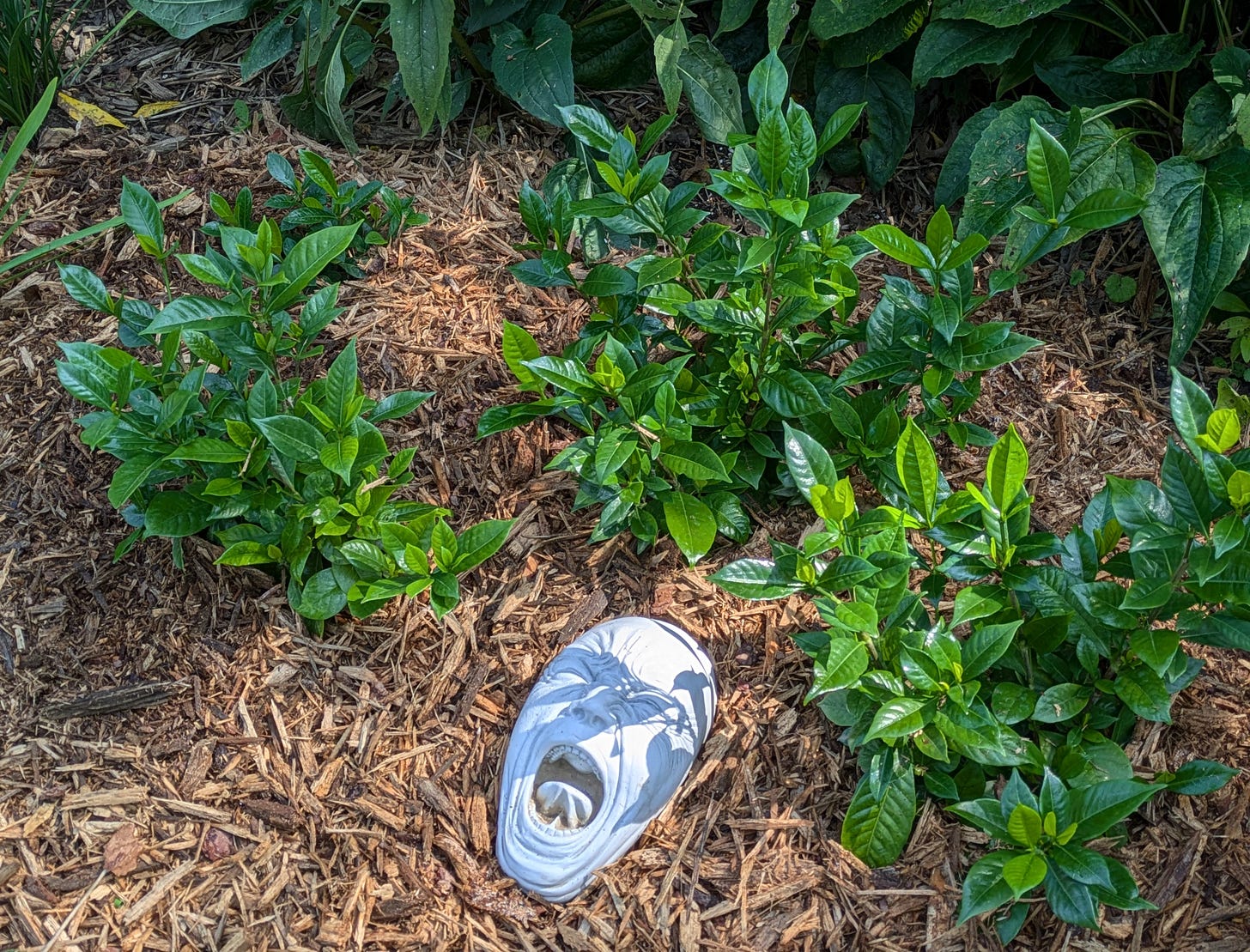
The bottom line is that yes, I’ve successfully raised gardenias outdoors if success is measured by survival and occasional bloom. Once the more cold-hardy varieties have lasted outdoors for several years, they may exhibit greater cold tolerance and more abundant flowering than I’ve seen so far.
Are there any other Gardenia jasminoides varieties worth trying for northern and semi-northern gardeners?
The variety ‘Frostproof’ sounds like a good bet, until you learn that the name refers to the plant’s resistance to bud damage by late spring frosts - not to markedly better winter cold tolerance. Like numerous other gardenias, its designated upper limit of hardiness is usually zone 7 (Logees however states that it will grow in zone 6 with protection).
There are claims made online for the gardenias Grif's Select (a compact hybrid), ‘Summer Snow’ and ‘Swan Queen’ supposedly proving hardy into zone 6, and they may also be worth experimenting with, along with 'Jubilation', ‘ScentAmazing’ and ‘Foolproof’, all of which are touted to be winter-hardy in zone 7a. One gardener in zone 5b/6a reported successfully overwintering a small, relatively unprotected plant of ‘Summer Snow’ through multiple readings in the single digits below zero, though it was killed to near ground level.
Gardenias are adaptable to full sun or partial shade, as long as they are provided with soil having a decent organic component that tends toward acidic pH, with mulching to keep soil cooler during hot summers and iron supplementation as needed to keep foliage a healthy deep green. Propagation is straightforward from softwood cuttings.
Protection measures for the upcoming winter here may include chicken-wire cages for plants, to be filled with lightweight mulch (chopped leaves or straw) and covered with a large pot when temps are scheduled to dip below the upper teens. Watering well in advance of a serious cold snap has been recommended and will be implemented if there’s insufficient soil moisture.
Sources for Gardenia jasminoides include Woodlanders (where I obtained ‘Chuck Hayes’), Wilson Bros. Nursery and Logee’s, which offers several varieties suitable for greenhouse and possibly home growing.

